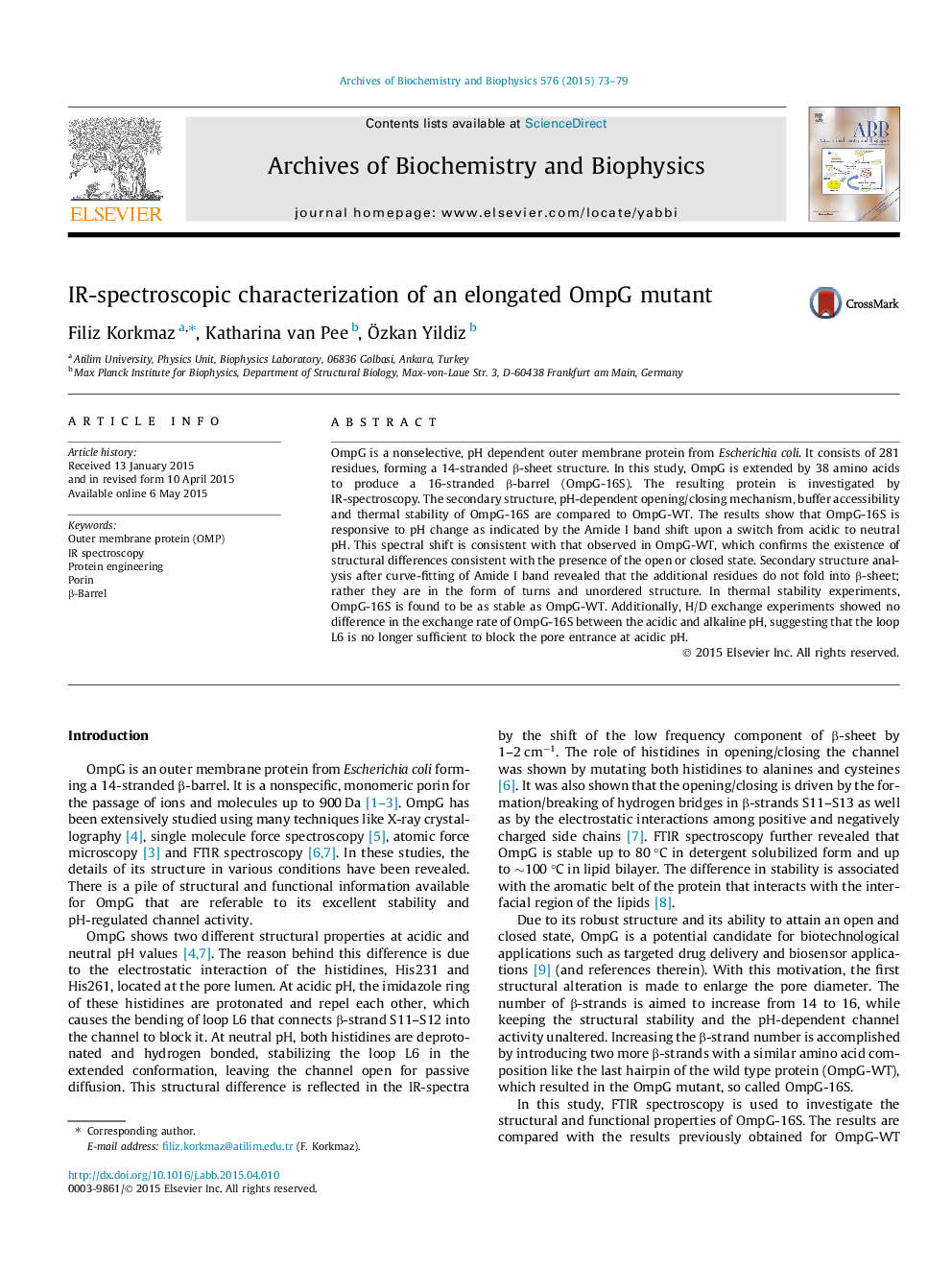| Article ID | Journal | Published Year | Pages | File Type |
|---|---|---|---|---|
| 1924932 | Archives of Biochemistry and Biophysics | 2015 | 7 Pages |
•OmpG-16S goes through structural modifications similar to OmpG-WT in response to pH.•Additional 38 residues in the mutant formed unordered structure at acidic pH.•Residues formed mainly turns and only a few attained β-sheet form at neutral pH.•Thermal stability of OmpG-16S is comparable to OmpG-WT.•Loop L6 is not able to properly cover the pore entrance in the mutant.
OmpG is a nonselective, pH dependent outer membrane protein from Escherichia coli. It consists of 281 residues, forming a 14-stranded β-sheet structure. In this study, OmpG is extended by 38 amino acids to produce a 16-stranded β-barrel (OmpG-16S). The resulting protein is investigated by IR-spectroscopy. The secondary structure, pH-dependent opening/closing mechanism, buffer accessibility and thermal stability of OmpG-16S are compared to OmpG-WT. The results show that OmpG-16S is responsive to pH change as indicated by the Amide I band shift upon a switch from acidic to neutral pH. This spectral shift is consistent with that observed in OmpG-WT, which confirms the existence of structural differences consistent with the presence of the open or closed state. Secondary structure analysis after curve-fitting of Amide I band revealed that the additional residues do not fold into β-sheet; rather they are in the form of turns and unordered structure. In thermal stability experiments, OmpG-16S is found to be as stable as OmpG-WT. Additionally, H/D exchange experiments showed no difference in the exchange rate of OmpG-16S between the acidic and alkaline pH, suggesting that the loop L6 is no longer sufficient to block the pore entrance at acidic pH.
